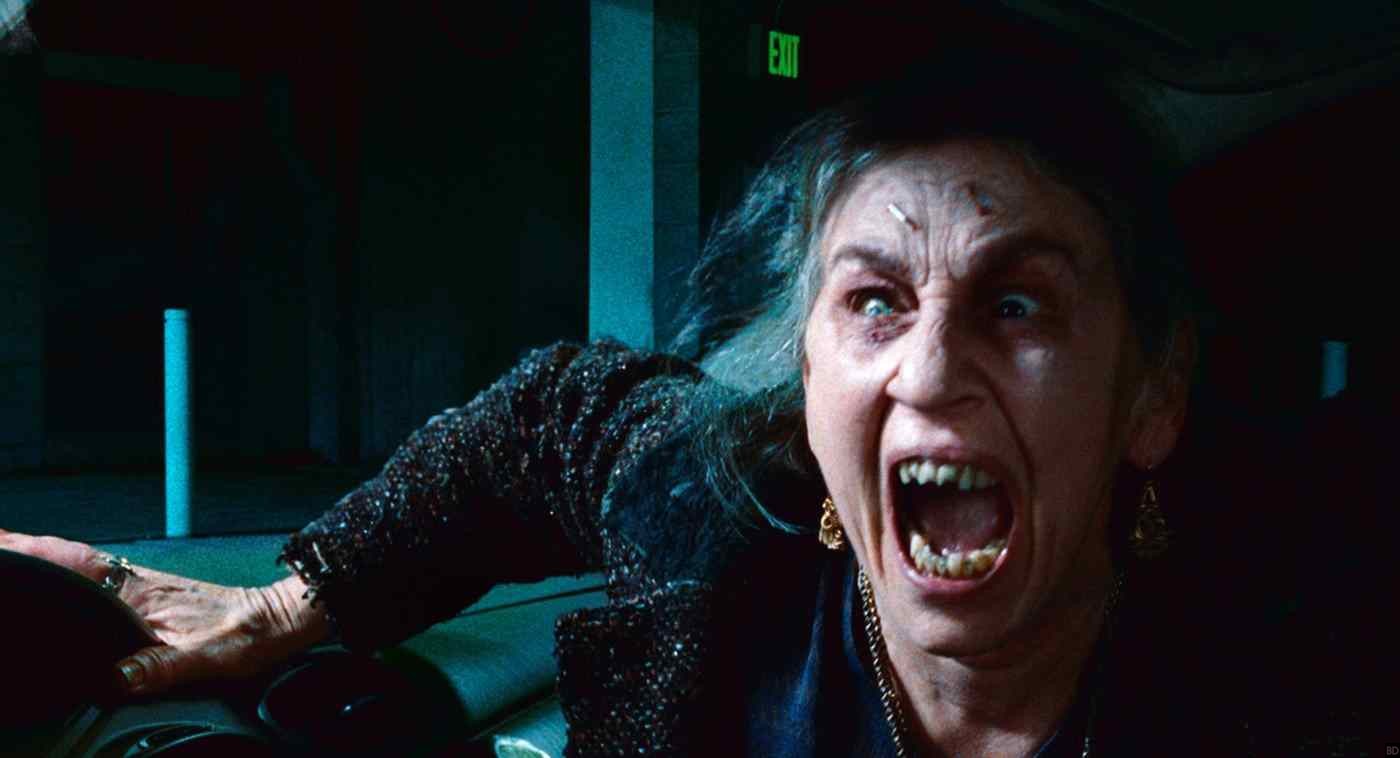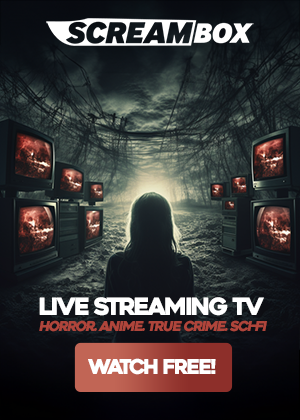Editorials
Six PG-13 Horror Movies That Didn’t Need Blood and Guts to Scare Us

For the majority of the film industry’s existence, movie ratings were more of a vague suggestion rather than a strict guideline. Before films like Indiana Jones & the Temple of Doom and Gremlins sparked a parental guidance revolution in the mid 80s, the difference between G and PG could often be something as extreme as gory decapitations or even explicit sex scenes.
And while it’s commonly accepted that the advent of the PG-13 rating resulted in studios attempting to pander to the lowest common denominator (with producers insisting that their box office revenue not be handicapped by an R rating while also not wanting to be associated with “kid” movies), I’d argue that limitations aren’t always a bad thing.
And with Blumhouse’s upcoming Five Nights at Freddy’s adaptation reminding audiences that you don’t really need traditional blood and guts to be scary, we decided that this would be a great time to highlight six PG-13 horror flicks that don’t let their rating get in the way of genre thrills. After all, the monster you don’t see can sometimes be scarier than the one that you do.
And if you think we missed a particularly creepy movie, don’t forget to comment below with your own PG-13 favorites.
Now, onto the list…
6. The Visit (2014)

From Split to The Sixth Sense, genre veteran M. Night Shyamalan actually has quite a few eerie PG-13 thrillers under his belt. In fact, his reliance on subdued scares over traditional shock value is precisely how he earned his reputation as a master of suspense. And while the director has helmed his fair share of duds in the past, he always comes back swinging with innovative new projects.
One of my favorites of his comeback films is 2014’s underrated found footage movie, The Visit. Equal parts funny and scary, this disturbing dive into bizarre family dynamics doesn’t need extreme violence to convince you that old age and madness are a horrific combination. And with the POV filmmaking stranding us in the middle of this eerie situation alongside our young protagonists, there’s no need for any excessively explicit imagery to get your blood pumping.
5. The Last Exorcism (2010)

Much like how any new shark movie will automatically be compared to Spielberg’s Jaws, you can’t really make an exorcism flick without harkening back to William Friedkin’s timeless classic. Thankfully, filmmaker Daniel Stamm decided to keep the usual supernatural tropes at bay when crafting this surprisingly clever found footage movie that takes a more down-to-earth approach to evangelical exorcisms.
Sure, most of the memorable scares are relegated to the end of the picture, as it eventually becomes clear that the situation is much worse than what our lead characters initially thought, but The Last Exorcism is further proof that putting audiences in the middle of the action can make any situation scarier even if your antagonist isn’t as savage as Pazuzu.
4. The Mothman Prophecies (2002)

I’ve already gushed about how much I love this surprisingly emotional piece of cosmic horror, but it’s always worth remembering that director Mark Pellington achieved this masterclass in tension without resorting to the usual monster movie clichés of torn-up bodies and rivers of blood. The Mothman himself is more of a presence here than a physical entity, which is why the flick still works without any artificial attempts at scaring the viewer.
In fact, I think that overly-literal frights would actually cheapen the carefully crafted sense of dread that slowly builds up here as Richard Gere’s character investigates these unexplainable phenomena. While I would have appreciated if the filmmakers had gone with a more “historically accurate” design for our main monster, this is likely the absolute peak of cryptozoological horror cinema.
3. 1408 (2007)

Stephen King stories are usually associated with child-eating monsters and disturbed main characters, but that doesn’t mean that the King of horror can’t write up a compelling yarn that only deals with existential terrors. In fact, one of the absolute best King adaptations is Mikael Håfström’s 1408, a small-scale thriller about a paranormal debunker (John Cusack) who becomes trapped in what Samuel L. Jackson’s character describes as “an evil fucking room.”
Extracting insane amounts of tension from what basically amounts to an empty hotel room, 1408 may feature some eerie ghosts and a couple of gnarly makeup effects, but nearly all of its memorable moments come from the room playing simple mind-games with our unfortunate main character – with almost none of these scenes featuring violence of any sort.
2. Underwater (2020)

One of 20th Century Fox’s final releases before their catalogue was eaten up by Disney, I had the distinct pleasure of watching William Eubank’s Underwater in theaters shortly before the movie was buried by an uncaring studio and the covid-19 pandemic. I didn’t really have high hopes for this one, hearing that it was a run-of-the-mill PG-13 sci-fi flick, but I ended up being pleasantly surprised by its cosmic horror undertones and general sense of claustrophobia.
Sure, the rating means that the film isn’t quite as brutal as some other aquatic creature features, but the scariest parts of the picture (until that incredibly Lovecraftian finale) mostly relate to the realistic dangers of deep-sea water pressure – something that isn’t really covered by the MPAA.
1. Drag Me to Hell (2007)

If even splatter master Sam Raimi can content himself with a PG-13, I think it’s pretty clear that movie ratings don’t matter all that much when it comes to crafting memorable scares. In fact, I always point to Drag Me to Hell as the de-facto example of why PG-13 horror shouldn’t have such a bad rap.
Basically a spiritual successor to the Evil Dead series, the self-explanatory Drag Me to Hell is just as spooky (and disgusting) as anything else in Raimi’s filmography, featuring enough blood, death and scares to appease horror fans while also being subdued enough to appeal to wider audiences. And while I’ll always prefer the hyper-violent misadventures of Ashley Williams, I’m glad that I can share this toned-down classic with cinephiles who don’t necessarily have the stomach for explicit gore.

Editorials
‘Ju-On: The Curse’ – The Original Movies That Spawned ‘The Grudge’ Franchise

In a world where over-polished corporate products dominate the media landscape while the ever-growing threat of AI-generated “art” haunts the horizon, I can’t help but remember a story about how Wes Anderson insisted on using real fur on the stop-motion puppets of his animated opus, Fantastic Mr. Fox. When the animators complained that using fur would result in obvious thumbprints and erratic hair movement that would ruin the “illusion” of lifelike movement, the filmmaker explained that these imperfections were the point.
Why am I bringing this up on a horror website? Well, I’ve always been of the opinion that low production value is simply part of the appeal of independent cinema, and nowhere is this more evident than in the horror genre. Rubber monster suits and watery blood effects are a big part of what make even the cheapest scary movies so endearing, and horror fans are uniquely predisposed to look beyond technical limitations in order to appreciate a good story.
One of my favorite examples of this is a certain micro-budget duology that kicked off one of the scariest film series of all time despite some undeniably janky presentation. And as a lifelong fan of low-budget scares, I’d like to invite you to join me down a J-Horror rabbit hole as we explore the criminally underrated origins of the Ju-On/The Grudge franchise.
While most of you are likely already familiar with 2002’s Ju-On: The Grudge, the film that helped to kick off the J-Horror craze and established Takashi Shimizu as a master of the craft, a lot of folks don’t realize that this was actually the filmmaker’s third attempt at telling the Saeki family story. In fact, the very first appearance of Kayako and her ghostly son occurred in a couple of 1998 short films made by Shimizu while he was still in film school.
Part of a made-for-TV anthology showcasing the work of up-and-coming Japanese filmmakers (Gakkô no Kaidan G), the shorts attempted to update classic Japanese folk tales for a new generation by incorporating modern elements like helpless high-schoolers and cellphones into old-fashioned ghost stories.

The original Toshio!
Despite some cheap camerawork and drama class make-up effects, Shimizu’s Katasumi and 4444444444 (so titled because the Japanese pronunciation of the number 4 is similar to that of death) were the clear highlights of the spooky collection despite being much shorter than the other segments. That’s why it was only natural that the director’s next project would be a feature-length expansion of these ideas produced for the direct-to-video market.
Coming up with an extensive mythology surrounding his murderous ghosts and realizing that he had a potential hit on his hands, Shimizu ended up making the risky decision to split his original two-hour story into two smaller films shot back-to-back. And while the sequel would suffer from this decision, the focus on serialized storytelling is what would ultimately turn this indie experiment into a global phenomenon.
Released in 2000, the first entry in this duology, simply titled Ju-On: The Curse, weaves an interconnected web of paranormal incidents surrounding a cursed house and the ill-fated families that inhabit it. While the film would actually reference the events of Shimizu’s shorts, it’s here that audiences were first introduced to the iconic opening text explaining how a violent death may spawn an infectious curse that self-perpetuates by causing even more deaths in a never-ending cycle of violence.
At first glance, The Curse feels a lot like an anthology meant to repurpose Shimizu’s existing ideas for ghostly short films into a feature format, but narrative details eventually add up as worried teachers, unsuspecting teenagers and psychic realtors unravel bits and pieces of the Saeki family history in a tragic tapestry of death. Curiously, this attempt at crafting a complex narrative puzzle would become a staple of the franchise as future entries (and even the video game) used non-linear storytelling to breathe new life into familiar yarns.
Of course, it’s really the scares that put this franchise on the map, and that’s why you’ll find plenty of expertly orchestrated frights here. Sure, the pale makeup effects and stock sound design aren’t that much better than what we saw in Gakkô no Kaidan G, but the suspenseful execution of moments like Toshio’s slow undead reveal and Kayako’s first contortionist crawl down the stairs – not to mention the incredibly disturbing sequence with a baby inside of a trash bag – are the stuff of horror legend regardless of budget.
I’d even argue that the low production value actually adds to the experience by making everything feel that much more down to earth. The Saeki house isn’t a stylish haunted manor from the Vincent Price era, it’s just a regular Japanese home inhabited by regular people, making it easier to believe that this modern urban legend could also happen to you. Hell, I even think Toshio is scarier when he can pass as a living kid even if the screaming cat effects aren’t as good as the sequels.

Cheap can still be scary.
Unfortunately, quality scares can’t solve everything, and that’s where Ju-On: The Curse 2 comes in. Released the same year as its predecessor, this bizarre sequel only features about 45 minutes of new footage, with the rest being recycled segments from the first film meant to pad out the runtime. While this is a surprisingly dishonest move on Shimizu’s part, with the decision likely resulting in confused viewers thinking that there was something wrong with their rented videotapes, it’s still pretty hard to call this a bad movie.
That’s why I’ve come to respect the flick as a rare instance of a cinematic expansion pack, as the first film didn’t really need to be any longer, but the new segments still do a great job of adding to the existing mythology. This time around, we learn that you don’t even have to come into direct contact with the haunted house in order to be affected by the curse, with characters only tangentially connected to the Saeki tragedy still meeting terrible fates.
That final shot featuring multiple Kayakos is also one of the most incredibly chilling moments in the entire franchise, with the amount of care put into these scenes suggesting that this was probably all meant to have been included in the first film before Shimizu decided otherwise. Either way, I’d still recommend watching this one immediately after Part I in a condensed double-feature – so long as you skip the first thirty minutes.
Despite their humble origins, these low-budget scare-fests would go on to inspire a ghostly media empire, with Shimizu eventually being given the chance to bring his creations to the big screen with one of the best J-Horror flicks of all time. And while I won’t argue that these direct-to-video precursors are necessarily better than 2002’s Ju-On: The Grudge (or even the American duology which was also helmed by Shimizu), I still think that something special was lost each time the series was tasked with pleasing a wider audience, as the story slowly became glossier and less real.
That’s why I’d urge hardcore horror fans to seek out Shimizu’s early experiments, as his creative fingerprints are the duct-tape that keeps this janky collection of horrific vignettes together. It may not always be pretty, but I’ll take the grimy actors caked in cheap blood and white clown makeup over corporate-approved movie monsters any day of the week.













You must be logged in to post a comment.